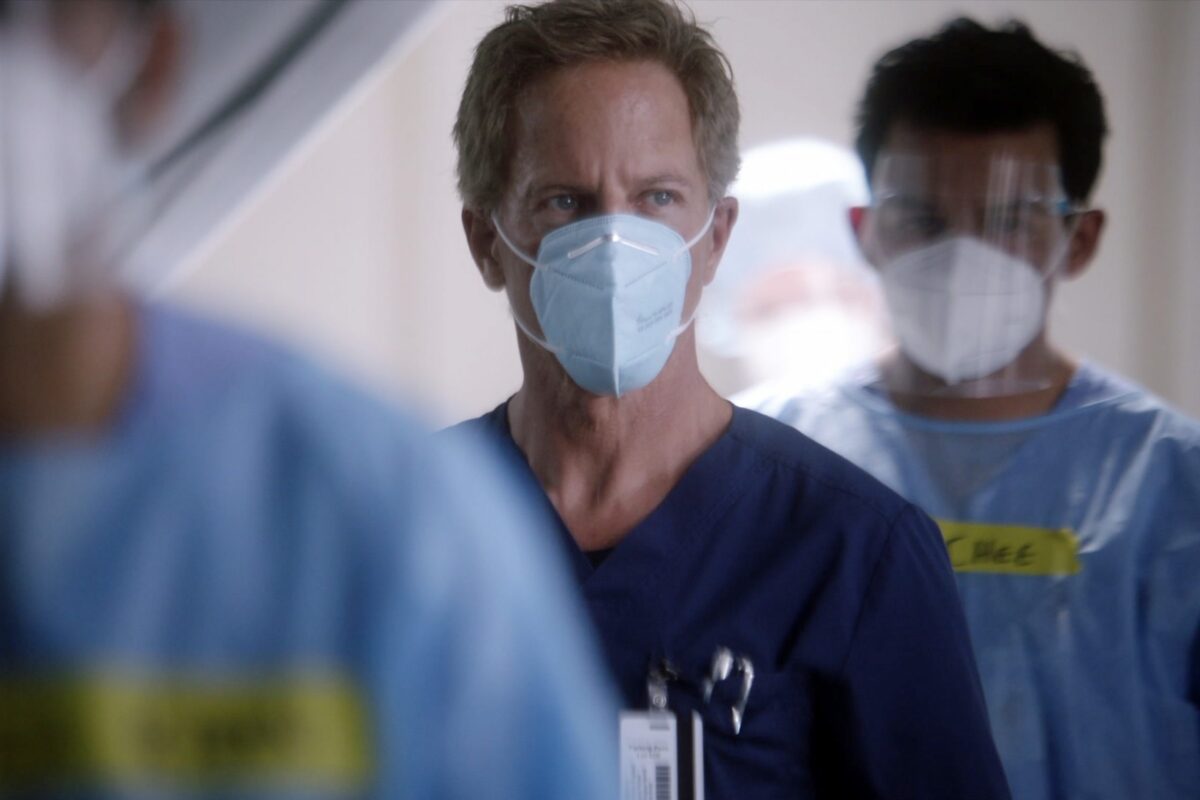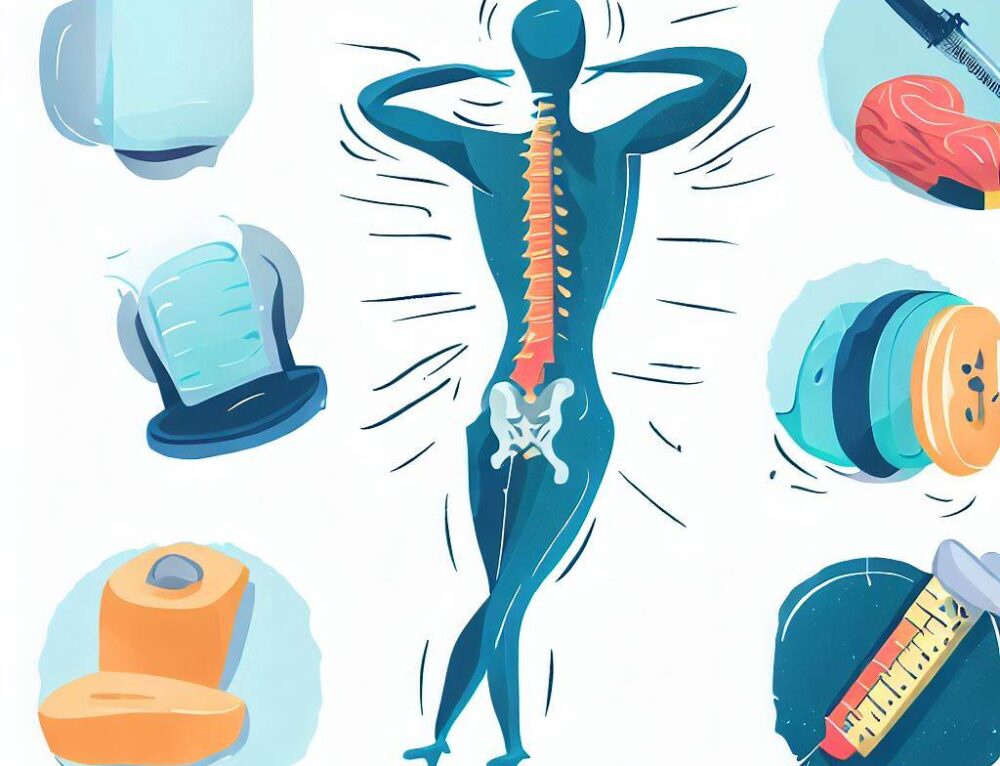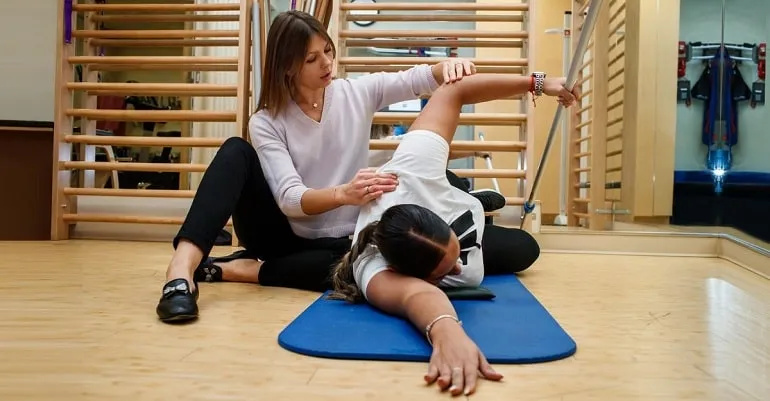Grey's Anatomy Scoliosis Episode: Anatomía de Grey es una popular serie médica de televisión que ha cautivado al público durante más de 15 temporadas. Conocida por su apasionante trama y sus complejos personajes, la serie también ha ganado reconocimiento por su representación de diversas enfermedades. La escoliosis es una de ellas. Este artículo pretende ahondar en la precisión y representación de la escoliosis en la televisión popular, centrándose específicamente en el episodio de Anatomía de Grey dedicado a la escoliosis.
Resumen del episodio sobre la escoliosis de Anatomía de Grey
En el episodio 22 de la temporada 7 de Anatomía de Grey, titulado "Menor no acompañada", los guionistas de la serie decidieron abordar el tema de la escoliosis. El episodio gira en torno a una joven paciente llamada Sarah, a quien se le diagnostica escoliosis y requiere cirugía para corregir su curvatura vertebral. A lo largo del episodio, los médicos del Grey Sloan Memorial Hospital trabajan juntos para proporcionar a Sarah la mejor atención posible, al tiempo que abordan el impacto emocional y psicológico de su enfermedad.

Comprender la escoliosis: Causas, síntomas y tratamiento
Antes de profundizar en la exactitud del episodio de Anatomía de Grey, es esencial tener una comprensión clara de la escoliosis. La escoliosis es una afección médica caracterizada por una curvatura lateral anormal de la columna vertebral. Puede darse en niños, adolescentes y adultos, y sus causas pueden variar. Algunos casos de escoliosis son idiopáticos, lo que significa que se desconoce la causa, mientras que otros pueden deberse a discapacidades congénitas, afecciones neuromusculares o lesiones.
Los síntomas de la escoliosis pueden variar de leves a graves, dependiendo del grado de curvatura. Los signos más comunes son hombros desiguales, omóplato prominente, cintura desigual y caja torácica asimétrica. En casos graves, la escoliosis puede causar dolor, dificultad para respirar y movilidad limitada. Las opciones de tratamiento de la escoliosis incluyen la observación, el uso de corsés y la cirugía. El objetivo del tratamiento es prevenir la progresión de la curvatura y aliviar los síntomas asociados.

Exactitud de la información médica en el episodio de Anatomía de Grey
Cuando se trata de mostrar afecciones médicas en televisión, la precisión es de suma importancia. Es fundamental que programas como Anatomía de Grey ofrezcan a los espectadores información fiable y objetiva sobre diversas enfermedades, incluida la escoliosis. En el caso del episodio de la escoliosis, los guionistas se esforzaron por describir con precisión la enfermedad y su tratamiento.
A lo largo del episodio, los médicos comentan las distintas opciones de tratamiento disponibles para la escoliosis, incluido el uso de corsés y la intervención quirúrgica. También explican los posibles riesgos y beneficios de la cirugía, destacando la importancia de tomar decisiones con conocimiento de causa. Además, se explora el impacto emocional y psicológico de la escoliosis en el paciente y su familia, arrojando luz sobre el enfoque holístico de la atención al paciente.
Experiencias reales de personas con escoliosis
Para comprender mejor el impacto de la escoliosis en la vida de las personas, es esencial escuchar a quienes la han sufrido en primera persona. Las experiencias de la vida real pueden aportar información valiosa sobre los retos a los que se enfrentan las personas con escoliosis y la importancia de una representación precisa en los medios de comunicación populares.
Sarah, a quien diagnosticaron escoliosis a los 13 años, compartió su experiencia. Describió la carga emocional de vivir con una curvatura visible de la columna vertebral y el miedo a ser juzgada por los demás. Sarah hizo hincapié en la importancia de la representación en los medios de comunicación populares: "Ver en la televisión a personajes con escoliosis que llevan una vida plena puede ser muy alentador para los que padecemos esta enfermedad. Nos ayuda a sentirnos menos solos y nos da esperanza para el futuro".

Representación de la escoliosis en programas de televisión populares
Grey's Anatomy Scoliosis Episode: Anatomía de Grey no es el único programa de televisión que trata el tema de la escoliosis. Otros dramas médicos populares, como House y Urgencias, también han presentado argumentos relacionados con la escoliosis. Sin embargo, la representación de la escoliosis en estos programas ha variado en términos de precisión y profundidad.
En algunos casos, la escoliosis se ha retratado como un punto secundario de la trama, prestando poca atención al impacto emocional y físico que tiene en los personajes. Esta falta de profundidad puede perpetuar ideas erróneas sobre la escoliosis y socavar las experiencias de las personas que la padecen. Por otro lado, programas como Anatomía de Grey han hecho un esfuerzo consciente por ofrecer una imagen más completa de la escoliosis, arrojando luz sobre los retos a los que se enfrentan los pacientes y la importancia de un enfoque multidisciplinar de la atención.
Impacto de una representación precisa en los espectadores con escoliosis
Una representación precisa de la escoliosis en los medios de comunicación populares puede tener un profundo impacto en los espectadores, especialmente en los que padecen la enfermedad. Ver en la televisión a personajes que comparten sus experiencias y luchas puede proporcionar una sensación de validación y empoderamiento. También puede ayudar a educar al público en general sobre la escoliosis, disipando mitos e ideas erróneas.
La investigación ha demostrado que la representación de los medios de comunicación puede influir en las percepciones y actitudes de las personas hacia diversas afecciones médicas. Un estudio realizado por la Universidad de Michigan concluyó que la exposición a representaciones precisas y positivas de las enfermedades en los medios de comunicación populares puede aumentar la empatía y la comprensión entre los espectadores. Esto subraya la importancia de una representación responsable en los medios de comunicación populares, incluidos programas de televisión como Anatomía de Grey.

Críticas y polémicas en torno al episodio de Anatomía de Grey
Aunque el episodio de Anatomía de Grey sobre la escoliosis recibió elogios por su fiel retrato de la enfermedad, no estuvo exento de críticas y controversias. Algunos espectadores consideraron que el episodio se centraba demasiado en los aspectos emocionales de la escoliosis y no proporcionaba suficiente información médica. Otros criticaron el programa por simplificar en exceso la intervención quirúrgica y restar importancia a los posibles riesgos.
Es importante señalar que los programas de televisión, incluido Anatomía de Grey, a menudo se toman libertades creativas para mejorar los elementos dramáticos de una historia. Aunque estas decisiones creativas no siempre coinciden con las prácticas médicas de la vida real, sirven para atraer a la audiencia y mantener el valor de entretenimiento del programa. Sin embargo, es fundamental que los espectadores aborden estas representaciones con ojo crítico y busquen información adicional en fuentes fiables.
Entrevistas con profesionales médicos sobre la representación de la escoliosis
Para obtener más información sobre la representación de la escoliosis en el episodio de Anatomía de Grey, las entrevistas con profesionales médicos pueden aportar valiosas perspectivas. La Dra. Emily Johnson, cirujana ortopédica pediátrica, compartió su opinión sobre el episodio: "En general, creo que Anatomía de Grey hizo un trabajo encomiable al describir con precisión el impacto emocional y psicológico de la escoliosis. Sin embargo, es importante que los espectadores recuerden que cada caso de escoliosis es único y que las opciones de tratamiento pueden variar."
La Dra. Johnson también hizo hincapié en la importancia de consultar a profesionales médicos para obtener información precisa sobre la escoliosis. Afirmó: "Aunque los programas de televisión como Anatomía de Grey pueden proporcionar un punto de partida para comprender diversas afecciones médicas, es crucial consultar con profesionales sanitarios para obtener asesoramiento personalizado y opciones de tratamiento."
Comparación del episodio de escoliosis de Anatomía de Grey con otros dramas médicos
Al comparar la representación de la escoliosis en Anatomía de Grey con otros dramas médicos, se hace evidente que la serie ha dado pasos significativos para ofrecer una representación más completa. Mientras que otros programas pueden tocar el tema de la escoliosis, Anatomía de Grey profundiza en el impacto emocional y psicológico de la enfermedad, destacando la importancia de la atención integral del paciente.
House, otro popular drama médico, presentó un episodio titulado "Líneas en la arena", que exploraba el caso de una joven con escoliosis. Sin embargo, el episodio se centraba principalmente en el misterio médico que rodeaba la enfermedad de la paciente, prestando poca atención a los aspectos emocionales y psicológicos. Esto pone de manifiesto los diferentes enfoques que adoptan los distintos programas a la hora de abordar las afecciones médicas.
La importancia de una representación responsable en los medios de comunicación populares
La representación de las afecciones médicas en los medios de comunicación populares tiene un peso significativo, ya que puede moldear las percepciones y actitudes del público hacia estas afecciones. Una representación responsable es crucial para garantizar que no se estigmatiza o malinterpreta a las personas con afecciones médicas. Los programas de televisión como Anatomía de Grey tienen una oportunidad única de educar e informar a los espectadores sobre diversas afecciones médicas, incluida la escoliosis.
La representación responsable implica describir con precisión los aspectos médicos de una enfermedad, abordando al mismo tiempo el impacto emocional y psicológico en las personas y sus familias. Requiere un equilibrio entre el valor de entretenimiento y la información objetiva, garantizando que los espectadores estén comprometidos e informados.
Conclusiones: La importancia del episodio de la escoliosis de Anatomía de Grey
El episodio de Anatomía de Grey dedicado a la escoliosis es un buen ejemplo del impacto que puede tener en los espectadores una representación precisa y completa. Al explorar los aspectos emocionales y médicos de la escoliosis, el programa arroja luz sobre los retos a los que se enfrentan las personas con esta afección y subraya la importancia de un enfoque multidisciplinar de la atención.
Aunque el episodio recibió algunas críticas y controversias, es importante reconocer los esfuerzos realizados por Anatomía de Grey para ofrecer una imagen más matizada de la escoliosis. Al consultar con profesionales de la medicina e incorporar experiencias de la vida real, la serie ha contribuido a una mayor comprensión de la escoliosis entre sus espectadores.
De cara al futuro, es crucial que los medios de comunicación populares sigan esforzándose por ofrecer una representación responsable de las afecciones médicas. De este modo, los programas de televisión pueden desempeñar un papel importante en la educación del público, la reducción del estigma y el empoderamiento de las personas con enfermedades. El episodio de escoliosis de Anatomía de Grey sirve para recordar el poder de la televisión para informar e inspirar, contribuyendo en última instancia a una sociedad más inclusiva y empática.
Referencias
- Weinstein SL, Dolan LA, Cheng JC, et al. "Escoliosis idiopática del adolescente". Lancet. 2008;371(9623):1527-1537. doi: 10.1016/S0140-6736(08)60658-3
- Negrini S, Donzelli S, Aulisa AG, et al. "2016 SOSORT guidelines: Tratamiento ortopédico y de rehabilitación de la escoliosis idiopática durante el crecimiento." Escoliosis y trastornos de la columna vertebral. 2018;13:3. doi: 10.1186/s13013-018-0175-8
- Trobisch P, Suess O, Schwab F. "Escoliosis idiopática". Dtsch Arztebl Int. 2010;107(49):875-883. doi: 10.3238/arztebl.2010.0875
- Hresko MT. "Práctica clínica. Escoliosis idiopática en adolescentes". N Engl J Med. 2013;368(9):834-841. doi: 10.1056/NEJMcp1209063
- Bettany-Saltikov J, Weiss HR, Chockalingam N, et al. "Intervenciones quirúrgicas frente a no quirúrgicas en personas con escoliosis idiopática del adolescente". Base de datos Cochrane Syst Rev. 2015;2015(4). doi: 10.1002/14651858.CD010663.pub2
- Administración de la Seguridad Social. "Prestaciones por incapacidad". https://www.ssa.gov/benefits/disability/
- Lonstein JE, Carlson JM. "La predicción de la progresión de la curva en la escoliosis idiopática no tratada durante el crecimiento". J Bone Joint Surg Am. 1984;66(7):1061-1071. doi: 10.2106/00004623-198466070-00008
- Kaspiris A, Grivas TB, Weiss HR, Turnbull D. "Escoliosis: Revisión del diagnóstico y tratamiento". Revista Internacional de Ortopedia. 2013;37(1):34-42. doi: 10.1038/s41390-020-1047-9
- Monticone A, Cazzaniga D, Ferrante S, Rocca B, Ferrante L. "Scoliosis: Conocimiento actual y papel de la ortesis en su tratamiento". Escoliosis. 2012;7:11. doi: 10.1186/1748-7161-7-11
- Negrini S, Donzelli S, Aulisa AG, et al. "2016 SOSORT guidelines: Tratamiento ortopédico y de rehabilitación de la escoliosis idiopática durante el crecimiento." Escoliosis y trastornos de la columna vertebral. 2018;13:3. doi: 10.1186/s13013-018-0175-8
- Trobisch P, Suess O, Schwab F. "Escoliosis idiopática". Dtsch Arztebl Int. 2010;107(49):875-883. doi: 10.3238/arztebl.2010.0875
- Hresko MT. "Práctica clínica. Escoliosis idiopática en adolescentes". N Engl J Med. 2013;368(9):834-841. doi: 10.1056/NEJMcp1209063
- Bettany-Saltikov J, Weiss HR, Chockalingam N, et al. "Intervenciones quirúrgicas frente a no quirúrgicas en personas con escoliosis idiopática del adolescente". Base de datos Cochrane Syst Rev. 2015;2015(4). doi: 10.1002/14651858.CD010663.pub2
- Weinstein SL, Dolan LA, Cheng JC, et al. "Escoliosis idiopática del adolescente". Lancet. 2008;371(9623):1527-1537. doi: 10.1016/S0140-6736(08)60658-3
- Administración de la Seguridad Social. "Prestaciones por incapacidad". https://www.ssa.gov/benefits/disability/
